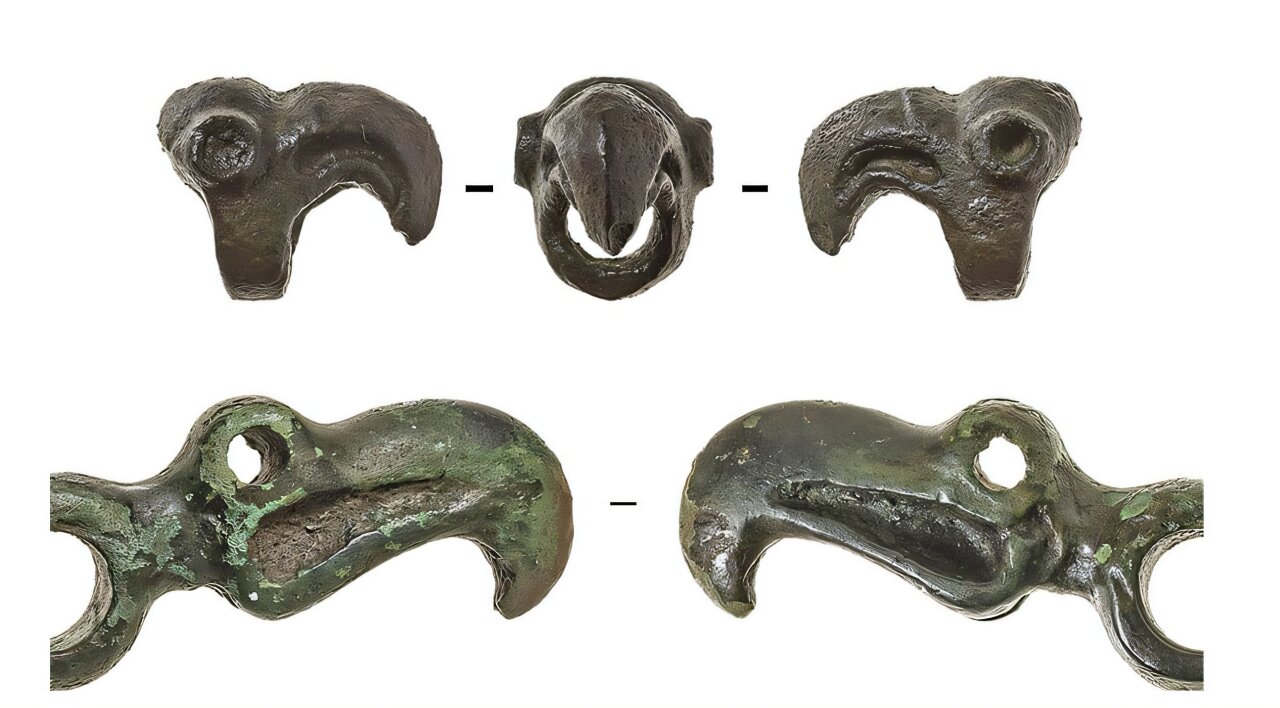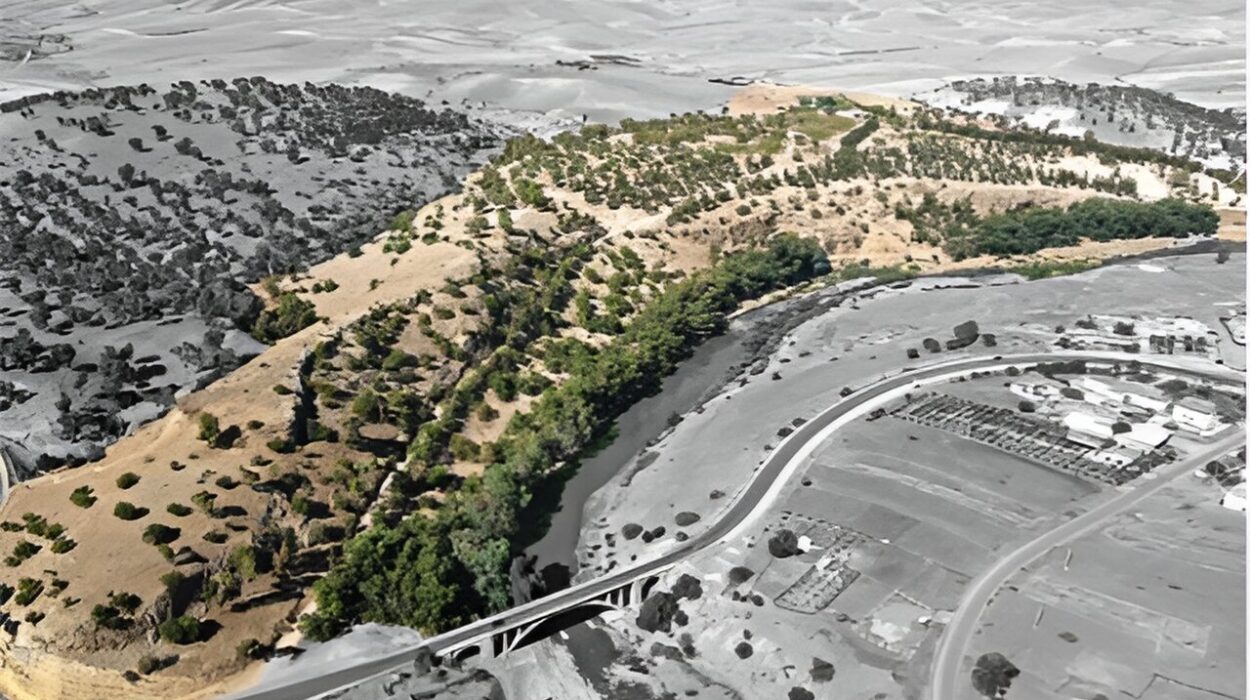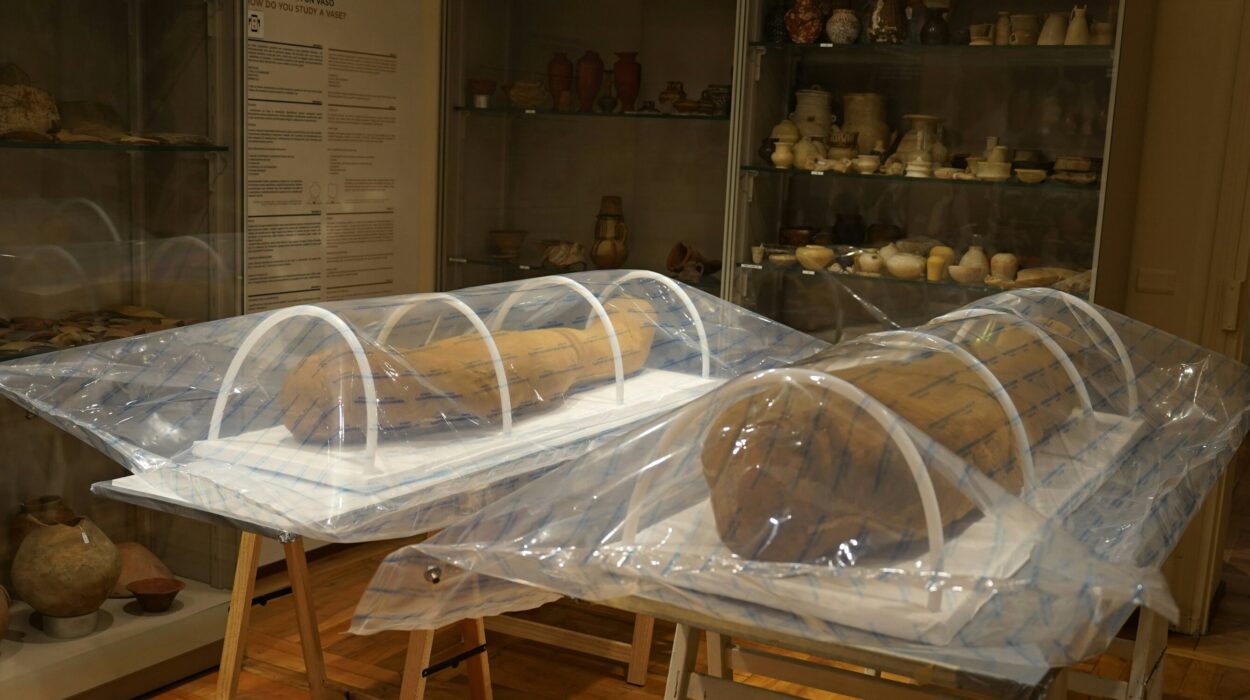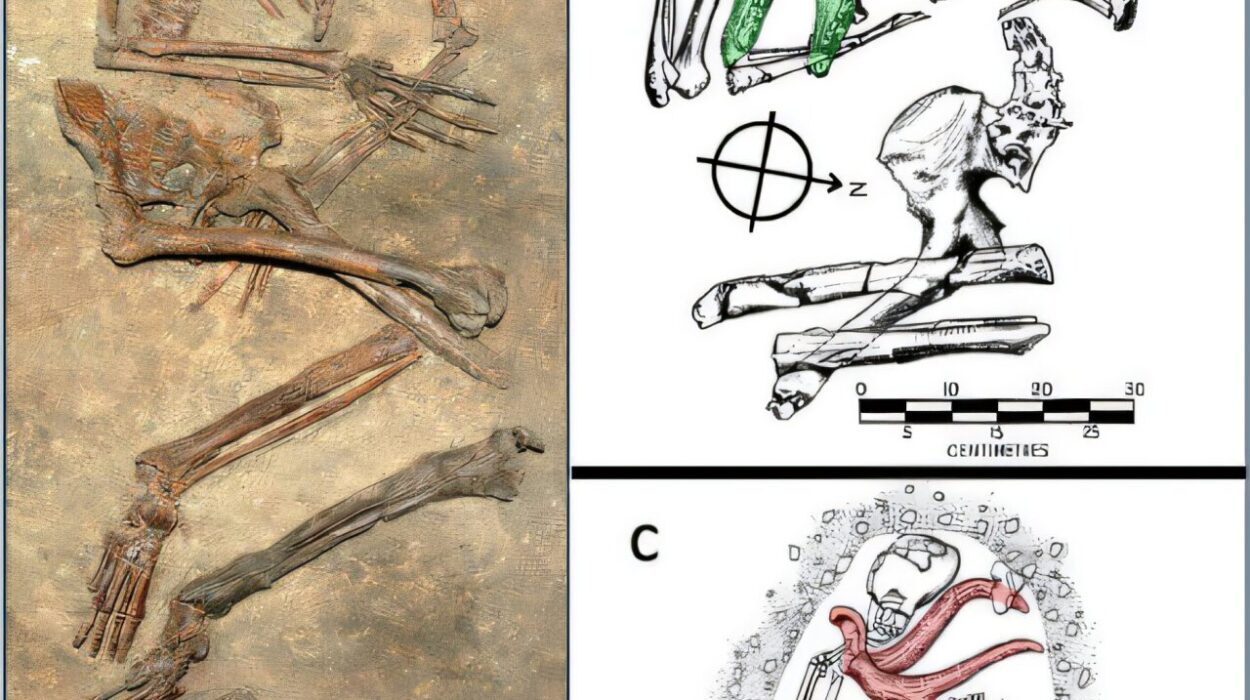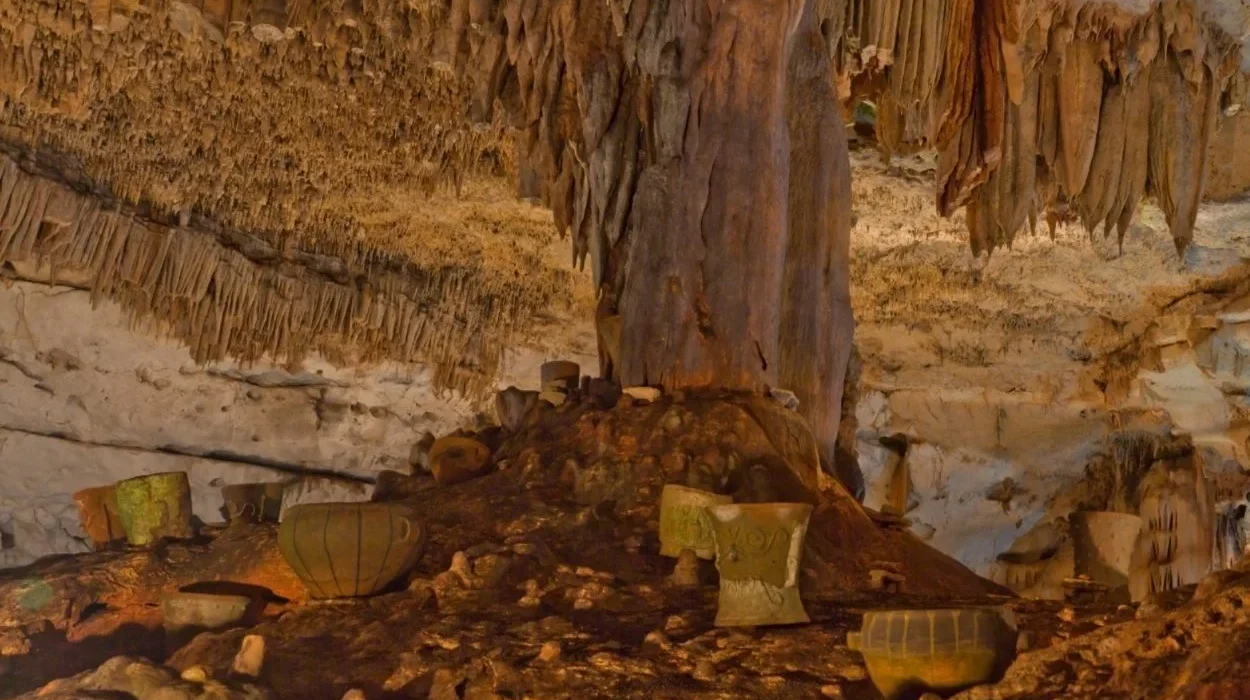Deep in the Uyuk River Valley of southern Siberia, where mountain winds sweep across vast steppes and silence hangs heavy over the swamps, an ancient secret has begun to speak again. Beneath a modest mound of earth—long dismissed by earlier archaeologists as unremarkable—lies a site now recognized as one of the most important discoveries in the study of Scythian culture.
This site, known as Tunnug 1, has revealed traces of an artistic and spiritual language that once united the ancient nomads of Eurasia—the Scythian animal style. Recently analyzed by Dr. Timur Sadykov and his team, with insights from Dr. Gino Caspari, this discovery provides the earliest securely dated evidence of the art, culture, and beliefs that defined the mysterious Scythians, a people whose legacy stretches across the Eurasian steppe like a faint echo of thunder.
The Scythians: Nomads of Myth and History
The Scythians have always occupied a shadowy place in the human imagination. To the ancient Greeks, they were fierce horsemen from the edge of the known world—untamed, independent, and feared. To modern historians, they are one of the great mysteries of the Iron Age: a network of tribes who ranged across the endless steppe from the Black Sea to Mongolia, leaving behind no written records but a breathtaking artistic legacy.
Their culture flourished between the 9th and 3rd centuries BCE, and at its heart lay a remarkable visual tradition—the Scythian animal style. In jewelry, weapons, clothing, and even tattoos, these nomads portrayed animals in a vivid, almost mythological form: deer leaping midair, predators locked in combat, birds of prey with wings outstretched, serpents curling and coiling in eternal motion.
But until recently, the origins of this art form were cloaked in uncertainty. Most discoveries were found in burial mounds of uncertain age, making it difficult to trace when or how this powerful artistic language began. Tunnug 1 has changed that.
The Rediscovery of Tunnug 1
Tunnug 1 was first noted by Soviet archaeologists in 1980. It sat low in a swamp, its location and elevation making it nearly impossible to excavate with the methods of the time. For decades, it was ignored—a forgotten mound in a forgotten valley.
Then, in the 2010s, a new generation of archaeologists returned to Tuva armed with modern technology. Drone mapping, ground-penetrating radar, and radiocarbon dating revealed what the early surveys had missed: the mound was much older and more significant than anyone had imagined. Beneath layers of soil lay a late ninth-century BCE burial complex, predating most known Scythian sites.
For Dr. Caspari, the discovery was life-changing. “Tunnug 1 is an extremely rare, if not unique, monument,” he explained. “It’s a once-in-a-lifetime opportunity. We only get one chance to excavate this tomb, and we must do it with the utmost care.”
The Valley of the Kings
Tunnug 1 lies within the Uyuk Valley, sometimes called the Siberian Valley of the Kings for its remarkable concentration of ancient kurgans—massive burial mounds built for early nomadic elites. Among these, the sites of Arzhan 1 and Arzhan 5 are already legendary, yielding rich burials filled with gold and finely crafted weapons.
Yet Tunnug 1 is older still. It belongs to the very dawn of Scythian civilization, when nomadic societies were just beginning to form their identity—when art, ritual, and social structure were emerging from a more primal, tribal past. Its discovery gives scholars a rare glimpse into the birth of the Scythian world, rather than its later golden age.
The Language of Animals
At the center of this culture was art—not art for beauty’s sake, but for meaning. The Scythian animal style was more than decoration; it was a sacred language that expressed beliefs about life, death, power, and the natural world.
Unlike the glittering gold plaques and ornate figures found in later Scythian tombs, the animal motifs at Tunnug 1 were humbler in form and material. The artisans worked in bone and bronze, not gold. The designs were fewer and simpler—representations of rams, felines, birds, and snakes.
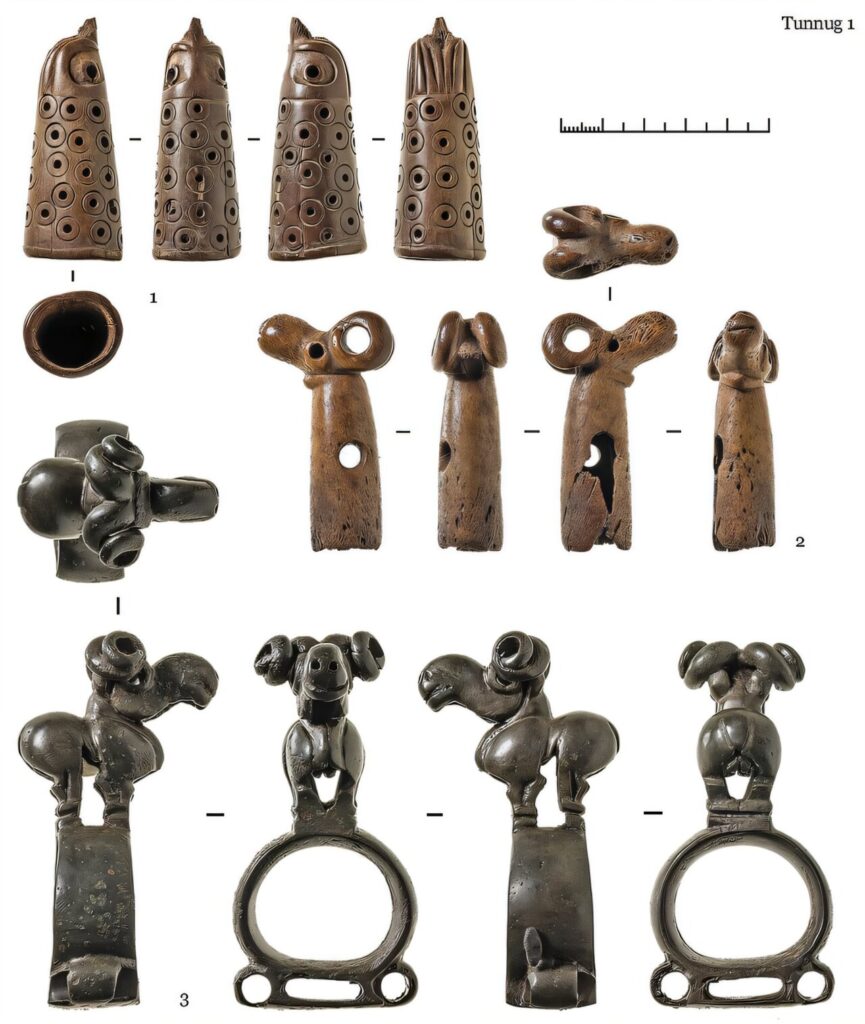
These creatures may seem unremarkable today, but in the spiritual universe of the early nomads, they held deep significance. Wild animals were not merely symbols—they were spiritual entities, manifestations of forces inhabiting the world around them. “Clearly, wild animals were very important as spirits inhabiting the natural world,” noted Dr. Caspari. “It’s really interesting that we mostly see depictions of wild animals and barely any domesticated ones.”
Even the rams, he adds, were likely not sheep but wild argali, the great mountain sheep of Central Asia—fierce, elusive, and untamable.
Art in Motion: The Early Scythian Triad
The excavations at Tunnug 1 revealed not only animal motifs but also the full expression of what scholars call the Scythian triad: weapons, horse gear, and animal-style art. Together, these three elements formed the essence of Scythian identity.
The Scythians were people of the horse—born, raised, and buried with them. Their lives depended on mobility, and their art reflected this connection. Most of the animal motifs found at Tunnug 1 adorned horse equipment—cheekpieces, harness appliques, and strap distributors. Only two pieces, both depicting felines, were associated with daggers, hinting at the link between animal strength and human power.
Later Scythian art would explode with elaborate imagery—flying stags, mythical beasts, and intricate combat scenes—but here, at Tunnug 1, we see the beginning: a modest, focused artistic vocabulary that spoke directly to the intimate relationship between humans, animals, and the steppe.
The Meaning Beneath the Metal
The choice of materials tells its own story. In later centuries, Scythian elites would drape themselves in gold—an expression of power and divine favor. But in the early ninth century BCE, at Tunnug 1, gold was rare and secondary. Although two undisturbed burials did contain gold, none of the animal-style artifacts were made from it.
Instead, the artisans used bone and bronze—materials drawn directly from the world around them. This connection to the earth and its creatures reinforces the idea that the art of Tunnug 1 was not mere ornamentation but part of a living spiritual practice, a bridge between the physical and the mystical.
Every line carved into bone, every cast piece of bronze, was a prayer—a dialogue between human and nature, life and death.
The Mystery of Meaning
One of the greatest challenges in understanding early Scythian art is the absence of written records. The first millennium BCE steppe was prehistoric in the truest sense—its people left no texts, no inscriptions to explain their symbols.
This means archaeologists must interpret the art through context, form, and comparison. Was the snake a symbol of rebirth? Did the bird represent the soul’s flight? Was the feline a guardian of the underworld? These are questions that cannot be answered with certainty.
But through careful analysis, patterns begin to emerge. The repetition of wild animal motifs suggests a worldview rooted in nature’s cycles—predation, fertility, migration, and transformation. The burial context indicates reverence for both human and animal life, unified in death through art and ritual.
The Cultural Melting Pot of the Steppe
Dr. Sadykov and his team propose that the diversity of animal motifs found at Tunnug 1 reflects the convergence of different nomadic groups in the Uyuk Valley. Each group brought its own artistic traditions and technologies, and together they shaped what would become the distinct Scythian animal style.
In other words, Scythian culture was not born in isolation—it was forged in contact, exchange, and cooperation. The Uyuk Valley may have served as a ceremonial hub where tribes gathered to perform funerary rituals, share artistic ideas, and cement alliances.
This fusion of styles and beliefs explains why Scythian art later spread so widely—from the Altai Mountains to the Black Sea—carried by the migrations of nomadic peoples who shared a common spiritual vision.
Excavating with Reverence
For the archaeologists working at Tunnug 1, the excavation is not merely an academic exercise—it is a sacred duty. “We are very, very careful,” said Dr. Caspari. “We only get one chance to excavate this tomb.”
The conditions are harsh. The swampy terrain makes every step a challenge, and preserving fragile organic materials requires meticulous attention. Yet the reward is immense: each fragment unearthed adds another line to the unwritten history of a people whose art spoke louder than words.
A Window into the Scythian Soul
The Scythians may have vanished more than two millennia ago, but their art continues to speak—a language of motion, power, and spirit. The animals they carved and cast are not lifeless decorations; they are embodiments of energy, caught between worlds.
At Tunnug 1, we encounter the earliest whisper of that vision. We see a people on the edge of history, shaping an identity through the creatures they revered and the landscapes they roamed. Their bones and bronze still hum with the rhythm of the steppe—the gallop of horses, the cry of hawks, the silence of the open plain.
The Ongoing Journey of Discovery
For now, the team continues its work, meticulously cataloging and analyzing every artifact. Much of the data has already been collected, but interpretation takes time. “People can definitely look forward to additional papers coming out soon,” said Dr. Caspari. Each new finding brings the Scythians into sharper focus—not as distant barbarians, but as artists, visionaries, and storytellers.
Tunnug 1 reminds us that history is never static. Beneath the soil lie stories still waiting to be told—stories of courage, creativity, and connection. And in the windswept valleys of Tuva, where wild horses still run, the spirit of the Scythians endures—etched forever in bronze, bone, and the memory of the earth itself.
More information: Timur Sadykov et al, Expanding the corpus of the earliest Scythian animal-style artefacts, Antiquity (2025). DOI: 10.15184/aqy.2025.10214.
